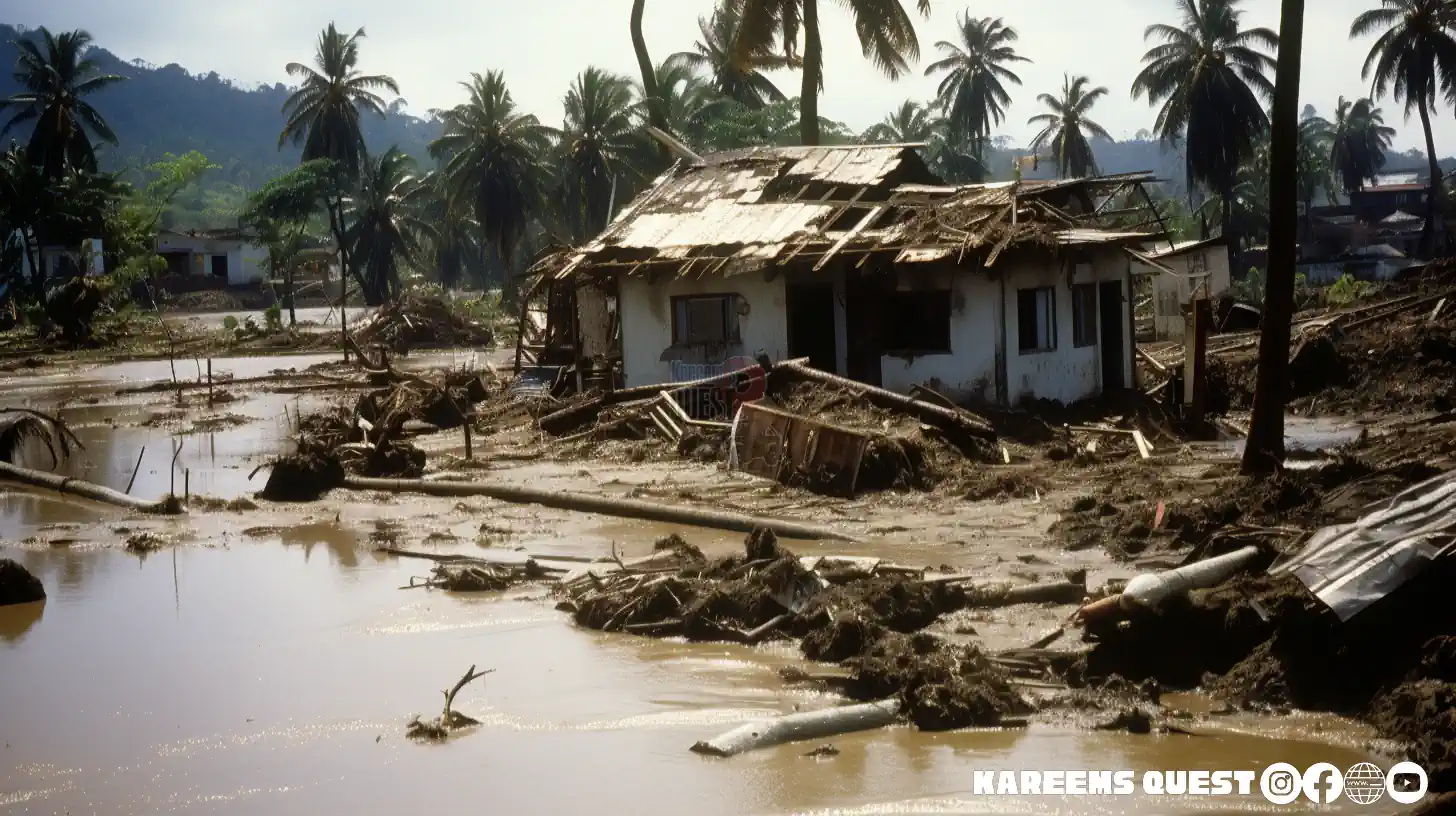Hurricane Beryl’s Impact on Jamaica: Hurricane Beryl Jamaica

Hurricane beryl jamaica – Hurricane Beryl, a Category 1 hurricane, approached Jamaica on July 5, 2023, making landfall near Port Antonio on the island’s northeastern coast. The hurricane brought heavy rainfall, strong winds, and storm surge, causing widespread damage and flooding.
Infrastructure Damage
Hurricane Beryl caused significant damage to Jamaica’s infrastructure, including roads, bridges, and buildings. Many roads were impassable due to flooding and landslides, isolating communities and hindering emergency response efforts. Several bridges were also damaged or destroyed, disrupting transportation and communication.
Hurricane Beryl ah reach Jamaica and ah cause some damage, but di good news is dat di storm ah weaken now. Fi track di path of di hurricane, yuh can check di spaghetti models beryl. Dem ah show dat di storm ah likely fi move away from Jamaica and head out to sea.
So wi nuh haffi worry too much bout it no more.
Property Damage
The hurricane also caused extensive damage to property in Jamaica. Homes, businesses, and other structures were damaged or destroyed by high winds, flooding, and storm surge. Many buildings lost their roofs or walls, and some were completely flattened. The damage to property is estimated to be in the millions of dollars.
Natural Resources Damage, Hurricane beryl jamaica
Hurricane Beryl also caused damage to Jamaica’s natural resources. The hurricane’s strong winds and heavy rainfall uprooted trees, damaged crops, and eroded beaches. The storm surge also caused saltwater intrusion into freshwater sources, contaminating drinking water and harming marine life.
Hurricane Beryl pummeled Jamaica with heavy rains and strong winds, leaving a trail of destruction in its wake. The storm’s path took it near Puerto Rico , where residents braced for possible impact. Fortunately, Puerto Rico was spared the brunt of the storm, but the island remains vigilant as Hurricane Beryl continues to churn through the Caribbean Sea.
Immediate Response Efforts
In the aftermath of Hurricane Beryl, local authorities and aid organizations quickly implemented response efforts to assist those affected by the storm. Emergency shelters were established to provide housing for those who lost their homes, and food and water were distributed to those in need. Search and rescue teams were also deployed to locate and assist those who were trapped or injured.
Socioeconomic Consequences of Hurricane Beryl

Hurricane Beryl’s impact on Jamaica extended beyond physical damage, with severe socioeconomic consequences affecting the country’s economy, society, and long-term development.
Economic Impact
The tourism industry, a significant contributor to Jamaica’s economy, suffered heavily. Damage to hotels, resorts, and infrastructure disrupted operations and led to a decline in visitor arrivals. The agricultural sector also experienced losses due to crop destruction and damage to livestock, affecting food security and livelihoods.
Social Impact
Hurricane Beryl displaced thousands of people, leaving them homeless and vulnerable. The loss of livelihoods, especially in the tourism and agriculture sectors, exacerbated economic hardship. The disruption of education, with schools and universities closed for extended periods, impacted the development and well-being of children and youth.
Long-term Challenges and Opportunities
Jamaica faces long-term challenges in recovering from Hurricane Beryl’s socioeconomic impact. However, the hurricane also presents opportunities for strengthening resilience and sustainable development. Investing in infrastructure, diversifying the economy, and implementing disaster preparedness measures can help mitigate future risks.
Climate Change and Hurricane Beryl

The link between climate change and the intensity and frequency of hurricanes is a subject of ongoing scientific research. While it is difficult to attribute any single hurricane to climate change, evidence suggests that changing climate patterns may be contributing to more frequent and severe hurricanes.
The Caribbean region has experienced a significant increase in the number of hurricanes in recent decades. The average number of hurricanes per year in the Caribbean has increased from 5.8 in the 1980s to 8.6 in the 2000s.
Climate change is causing sea levels to rise, which can lead to more powerful storm surges. Storm surges are a major cause of damage during hurricanes, and they can be particularly dangerous in low-lying areas.
Implications for Jamaica
The implications of climate change for Jamaica’s disaster preparedness and risk management strategies are significant. The country needs to invest in measures to adapt to the impacts of climate change, such as building sea walls and levees, and developing early warning systems.
Jamaica also needs to work with other countries in the Caribbean to develop regional strategies for disaster preparedness and response. By working together, countries in the region can reduce the risk of damage and loss of life from hurricanes.